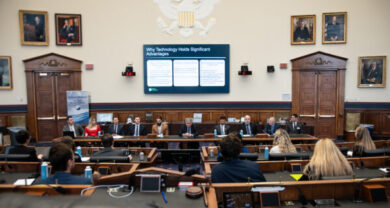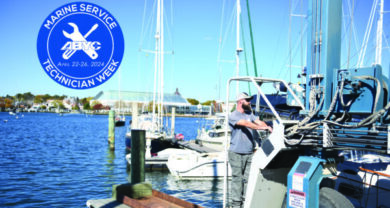Following Foreign Footsteps
If New Zealand can do it, why can’t Maine?
That’s what a growing number of Maine boat builders have been asking themselves recently.
New Zealand has gone from invisibility within the international boat building community to the 6th largest superyacht building nation in just 15 years. And the two boat building industries appear to have quite a bit in common.
The first person to point out that similarity was boating writer Nigel Calder. He submitted a white paper to Maine Gov. John Baldacci in October 2003, outlining what he saw as the potential for growth of the state’s boat building industry if it banded together to market itself worldwide.
“Many small boat builders in New Zealand transitioned from building boats not much larger than dinghies to building 100-plus-foot superyachts in a single decade,” Calder stated in the paper. “South Africa is on a similar trajectory at the present time. There is no reason Maine could not do the same.”
This transition resulted in exponential marine export growth for New Zealand, from NZD$82 million in 1994 to NZD$389 million in 2003.
Calder described the main hurdle to similar success in Maine as the “fragmentation, dispersal and competition” that plagues the cottage industry.
Though currently in the early stages of establishing their own marketing strategy, Maine boat builders, in partnership with the state, are well on their way to overcoming these hurdles.
Board to be established
Now a year after Calder submitted his paper, a group of 15 to 20 Maine boat builders is working with the state and the Maine Marine Trade Association to hire a temporary project manager for a three-month ramp-up of the initiative.
The goal: to triple state boat sales to more than $1 billion within 10 years.
As Boating Industry went to press, the project manager was expected to be hired in time for the Maine Boat Show, scheduled to open on March 18. The primary responsibilities of that position will be to gather the resources to achieve long-term funding, and the establishment of a board to direct the initiative, says Steve Von Vogt, manager of special projects at Hodgdon Yachts and an active participant in the initiative.
Von Vogt predicts that the board will be up and running by summer or early fall. In the meantime, however, several steps have already been taken.
The group has created a “Maine Built Boats” logo, with the help of The Hinckley Co.’s marketing department. And an ad has been run in Fortune magazine, promoting boat building as one of several traditional, but cutting-edge, industries in Maine, contributing to its status as the 11th fastest growing state in exports.
Exporting has a little bit of a different meaning for the Maine boat building alliance, however. While the group does want to do more business with foreign boaters, it also wants to get more business from “south of the Piscataqua River,” which separates Maine from New Hampshire.
“A lot of American clients are going to Europe and New Zealand to get their boat built,” says Von Vogt. “We want to slow that down.”
Assisting in both of those goals, at least for the moment, are low interest rates and a currency advantage.
Increasing visibility
One of the ways the group plans to achieve its goals is to have a stronger presence at national and international boat shows, including those in Monaco, Fort Lauderdale, Fla., Düsseldorf, Annapolis, Md., and on the West Coast.
It also would like to imitate New Zealand’s sponsored tours for journalists and boat designers. And get assistance from the state in creating a favorable regulatory and tax environment. As Calder pointed out, it is in the state’s best interest to do so.
“The boat building industry provides a substantial number of good, interesting year-round jobs that mostly pay well above minimum wage,” he wrote. “It is an essential component in preserving the remaining working waterfronts in Maine, which in turn are important to sustaining the tourist industry.”
In the New Zealand model, the government’s support was an essential part of the equation, as it has been in Maine. Von Vogt says the state has already matched some of the seed money raised by the boat builders and provided the resources to help them get organized.
“So many of America’s traditional manufacturing industries are not doing well,” sums up Elaine Scott, marketing manager of the Maine Department of Economic and Community Development, “but our boat building in Maine is quite strong. The state wants to nurture it and make it grow even stronger.”




